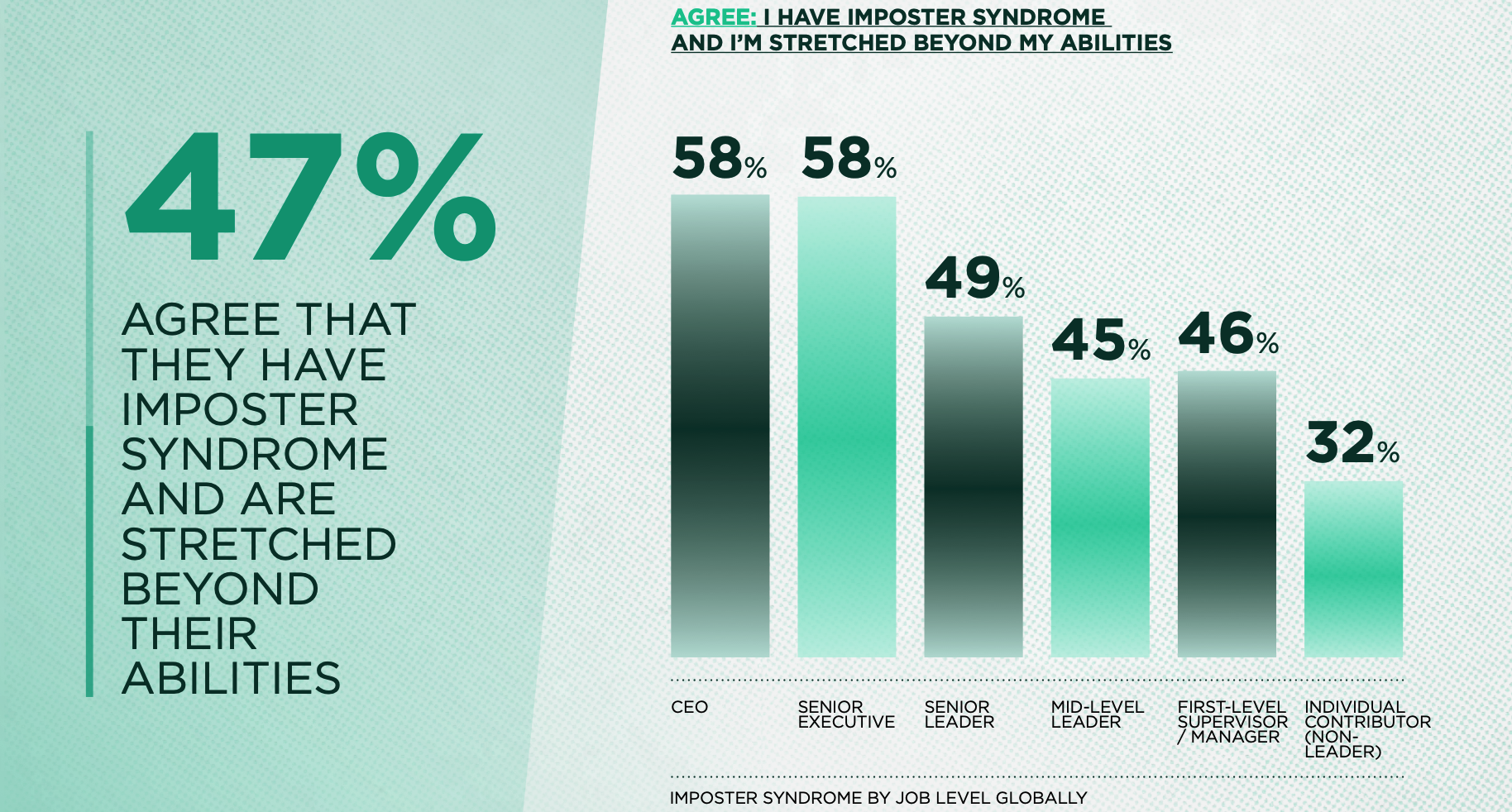5 Steps to Overcoming Imposter Syndrome
Do You feel like a fraud and lack confidence?
Manypeople doubt their capabilities, lack confidence, and believe any successes are due to luck. These feelings are known as Imposter Syndrome.
A recent Korn Ferry report found that 47% of the workforce globally believe they suffer from Imposter Syndrome and are stretched beyond their ability.
An article in the International Journal of Behavioural Science estimated that 70% of people experience imposter feelings at some point in their lives.
In this article I shall explain:
What Imposter Syndrome is
The common signs and symptoms
The impact the imposter syndrome could have on your day-to-day life
My 5 simple steps to overcome Imposter Syndrome
Imposter Syndrome was identified in 1978 by psychologists Suzanne Imes and Pauline Rose Clance. They defined it as “a psychological pattern of behaviour where people doubt their accomplishments and have a persistent internalised fear of being exposed as a fraud.”
My 5 simple steps overcoming Imposter Syndrome
Consider who & what is important to you in relation to Imposter Syndrome.
Firstly, identify who the important people are in your life; you, your family, partner, work colleagues, clients, suppliers or the Board.
Then consider what is important to you in your approach to these relationships. For example, you might want to feel confident, comfortable and competent in your interactions with work colleagues, clients, suppliers and the Board.
In terms of your family, job security, spending quality time together and living a comfortable life might be important.
2. Notice and name the internal unwanted experiences
Then notice and name the unwanted internal experiences such as thoughts, feelings, images, memories and sensations. When thinking about imposter syndrome, I generally hear clients talking about a fear of failure, negative self-talk, feeling inadequate, self-doubt, a lack of confidence and dissatisfaction with life.
Our mind tells us stories and these stories are thoughts. Your mind might be telling you “You don’t belong here”, “You are a fraud”, “You are going to get caught out” or “This will all go wrong!”.
Remember they are thoughts and may not be the reality. Just notice what the mind is telling you.
3. Notice what you do when the unwanted internal experiences show up
When you have noticed and named the unwanted internal experiences the next step is to notice what you do to get relief from the unwanted stuff. You may procrastinate, over-prepare for meetings and presentations, downplay achievements, check and re-check your work, avoid tasks and events and say no to opportunities you won’t feel comfortable about.
4. Consider what actions and behaviours could bring you satisfaction
If you go back and look at the list, you produced for step one – what’s important? What do you need to do to gain satisfaction in relation to your imposter syndrome? Maybe you could try to accept compliments, say ‘yes’ to new opportunities, gain feedback from others, assess your strengths and areas of improvement, set goals and identify development activities.
5. Workability
Notice whether the experiences and behaviours work to move you in your chosen life direction. Here are some questions to consider:
Is listening to your mind working for you to live a satisfied life or is it limiting it?
Are my relief strategies supporting me with my imposter syndrome?
Are your actions helping you to be the person you want to be?
Workability is not about judgements or being right or wrong it’s about noticing your actions and the consequences that follow.
Want Inspiration and tips?
Click the button below to subscribe to my fortnightly short email on leadership topics.

